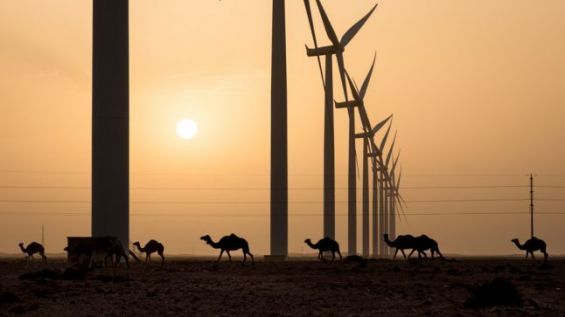Renewable energy is definitely an efficient way of preserving the environment and coping with climate change. But for a new study published Friday, 7th of September, on the scientific journal «Science», relying on renewable resources could have a good impact on the Sahara.
Indeed, researchers at the University of Maryland, College Park, believe that solar and wind farms could make the Sahara more humid. After conducting a series of tests, researchers found out that «large-scale installations of wind and solar farms covering the Sahara lead to a local temperature increase and more than a twofold precipitation increase, especially in the Sahel».
Make the Sahara green again
According to the same study, installing wind turbines and wind photovoltaic panels in the Sahara covers the land and modifies «land surface properties». The projects could also «have unintended consequences on local and regional climate», added the researchers.
«Solar panels directly reduce surface albedo and thus trigger a similar positive albedo–precipitation–vegetation feedback to that of wind farms, and this feedback leads to temperature and precipitation increase», explained the same source.
The study states that wind farms can also «increase precipitation as much as +0.25 mm/day, averaged over areas with wind farm installations, which results in the doubling of precipitation compared with the control experiment (0.24 mm/day), particularly in the Sahel region, which features an average increase of +1.12 mm/day (table S1)».
«The increase in precipitation, in turn, leads to increases in vegetation cover fraction (+0.084), LAI (+0.50 m2/m2), and root carbon (+0.08 kgC/m2) that further reduce surface albedo.These changes together trigger a positive albedo–precipitation–vegetation feedback».
Professor Fred Kucharski who works for the International Center for Theoretical Physics in Trieste, Italy, and who participated to the study, told Der Tagesspiegel that «these developments wouldn't make the Sahara green, but greener», stressing that «10 to 15% of the surface could be covered with grass and bushes».
A source of energy that can cover the energy needs of the world
Beyond the regional climate repercussions, the study concludes that installing wind and solar farms in the Sahara can meet the global energy demand. Indeed, if in 2017 the energy needs of humanity amounted to only 18 terawatts, the Sahara alone could generate 79 terawatts.
Delivering energy to the four corners of the Sahara is still a challenge. Realistically speaking, the study evokes the financial, technological and political constraints, which still blocks this type of projects, even if this objective is becoming «more feasible than before».





 chargement...
chargement...













